The Mexican Community of Forest Hill, Louisiana
Religious Celebrations
The most important religious holidays celebrated by the Mexican community, according to residents who were interviewed, is the feast day of the Virgin of Guadalupe, Christmas, and Easter. Each of these holidays involve several days of worship and celebration and are important to the community because they uphold the importance of family and are a means by which parents pass on their religious traditions to their children. Because they are celebrated in a traditional manner, far from home, they also serve as a celebration of Mexican culture. Many of these traditions also consist of a hybridization of Spanish Catholic and indigenous traditions.
Easter
During Holy Week (Semana Santa), which extends from Palm Sunday to Easter Saturday, masses are held to commemorate the final days of Christ. Unlike festivities in the United States, the main celebration of the Easter seasons takes place on Good Friday. On that day, church members put on costumes and reenact the Passion of the Christ (Crucifixion of Christ). In addition to the individual portraying Jesus, others dress as Roman soldiers, disciples, and angels. On Easter Sunday (Pascua), when the focus is on the Resurrection of Christ, the population dresses in their finest clothes and goes to church, where they make the twelve stations of the cross.
Feast Day of the Virgin of Guadalupe
The Feast day of the Virgin of Guadalupe (Día de Nuestra Señora de Guadalupe) is celebrated each year on December 12th. The holiday marks the anniversary of the sighting of the Virgin by the Indian convert (and now saint) Juan Diego in 1531, on Tepeyac Hill, located outside Mexico City. The strong emotional attachment that members of the community have for the Virgin of Guadalupe is reflected in the fact that her feast day is considered to be the “biggest celebration of the year” and Mexicans from all over the area come to town to honor her. On December 11th, the day before the feast day in Forest Hill, a mass was said and a mariachi band from Houston was hired to provide music. On the following day, a dance troop with some 30 members, who range in age from about 3 to 35, danced in honor of the Virgin. The dancers wore colorful costumes associated with prehispanic culture and performed a dance described as an “Aztec dance”. The costume worn by the dancers included a headdress with what appeared to be large peacock feathers attached to it. Nut shells the size of pecans were attached to an anklet that the dancers wear. In conjunction to the distinctive sounds produced by the shells, the dancers also shake a metal rattle as they perform.
Before the dance begins, incense is burned in a cup and the dancers ask the Virgin Mary and Jesus for permission to dance. Following that, the dance begins, and the dancers begin to move their feet in the shape of a cross. According to Joaquina Canada, who runs the local taqueria stand and makes costumes for the troupe, each end of the cross represents a different natural element. One end of the cross signifies the sun, and the other sides air, water, and earth. At the end of mass the dancers moved outside and danced in the open field next to the church.
Following mass last year, festivities were held at the nearby Forest Hill Academy gymnasium. There, the troupe danced a “prehispanic dance” to the beat of a large drum brought up from Mexico. When the dancers finished their performance, a mariachi band played, and everyone got up to dance. In addition to important religious events the group also dances at more secular holidays. Father Pedro, for example, recently took the group to Alexandria to dance in this year’s Martin Luther King Day celebration.
Las Posadas
Unlike the non-Hispanic population of the United States, in which the Christmas celebration focuses on Christmas Eve and Christmas day, the Mexican Christmas tradition is much more prolonged and festive. It consists of a combination of Las Posadas (The Lodgings) and El Día de los Tres Reyes (Three Kings Day). Las Posadas is a nine-day celebration that begins on December 16th and ends on Christmas Eve. Traditionally, Los Posadas involves the reenactment of Mary and Joseph’s search for lodging during their escape to Bethlehem. Celebrations are held each evening at the homes of different family members or friends. In Forest Hill, masses are said after work each night during this period.
The end of the Las Posadas is marked by a ceremony known as “Rocking the Baby” (Arrollando El Niño) which centers on a nativity scene (nacimiento). The ceremony often takes place in the home of friends, family members, or godparents, but may also occur in the church. In Forest Hill, the ceremony was observed during the Christmas Eve mass at the Catholic Church. Several members of the community also practiced the ceremony at home. Godparents play a central role in the celebration and, according to tradition, are expected to assume the role for three years. During the first year, godparents bring a white dress to put on the baby Jesus. After the first year, however, they may bring a dress of a different color.
Irma Rodriguez, the owner of the local Mexican restaurant, revived this tradition in her home several years ago, after moving to the area. Approximately 30 friends and family members took part in the ceremony at her home in Lecompte. As midnight approached, a family member handed each participant an unlit white candle pushed through the center of a paper plate to protect them from the drippings of hot wax. Each child was handed a box of sparklers. As this was occurring, the godmother began to dress the baby Jesus in a white dress (Fig. 8). Once the baby was dressed, one of the participants walked into the room with a large, circular serving tray that was covered with a variety of different candies (Fig. 9). The godmother then placed the baby Jesus on the tray and family and friends began to walk to the front porch where the nativity scene was located. A man stood at the entrance with a lit candle and extended it forward to light the candle of each participant as they walked outside.
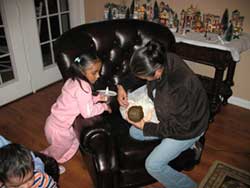
Figure 8-The padrina (godmother) dresses the baby Jesus in a white silk dress in preparation for the ceremony known as “Rocking the Baby,” which marks the end of the Mexican Christmas tradition called Las Posadas (The Lodgings). A small girl watches with great interest as the baby is dressed.
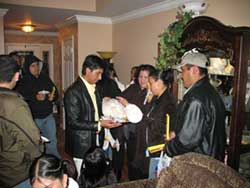
Figure 9-After the baby Jesus is dressed, He is placed on a serving tray covered with candies, then carried to the nativity scene outside where the ceremony is set to begin.
Outside, on the front porch, the godparents stood to the right of the nativity scene, holding the baby Jesus. Friends and family members congregated on each side of the godparents, holding lit candles (Fig. 10). A young woman standing opposite the godparents began to recite Ave Marias (Hail Marys) for approximately 15 minutes. After the recitation of prayers, the godparents placed the baby Jesus in a small, white lace blanket (Fig. 11). They then rocked the baby Jesus back in forth and, along with the assembled family and friends, began to lull Him to sleep by singing El Rorro (sung to the tune of rock-a-bye-baby). When the lullaby ended, the godmother removed the baby Jesus from the blanket and once again placed Him on the tray of candies. The tray was taken to each participant, each of whom kissed the baby Jesus on the head and then reached into the tray to take a piece of candy (Fig. 12). After everyone had kissed the baby Jesus, the godparents removed Him from the tray and placed Him in a lying position in the manger (Fig. 13). The baby Jesus is left in the manger until January 6th (Three Kings Day) when He is placed in a standing position to receive gifts from the three kings.
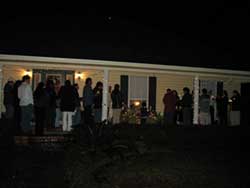
Figure 10-During the ceremony the padrinos (godparents) hold the baby Jesus while a series of prayers to “Santa Maria” are recited by a friend and the participants respond.
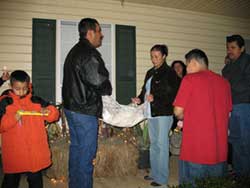
Figure 11-Following prayers, the baby Jesus is placed in a blanket and rocked back-and-forth by the padrinos as everyone sings a lullabye.
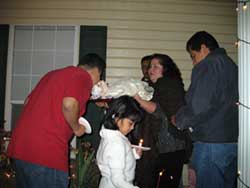
Figure 12-After being placed on the tray of candies, the homeowners walks up to each participant in the ceremony. Earch person then kisses the head of the baby Jesus and take a pieces of candy after doing so.
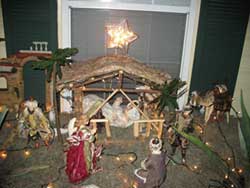
Figure 13-At the end of the ceremony, the baby Jesus is placed in the manger in a supine position. He will not be raised up again until Three King’s Day on January 6th, when he is placed in a standing position to receive gifts from the three wise men.
At the conclusion of the ceremony, Irma announced that “la cena” (dinner) would be served inside. A buffet was set up in the garage that consisted of chicken, tamales, beans, a salad, and jambalaya (Fig. 14). Irma’s son Eddie pointed out the blending of Mexican and Louisianan traditions when it came to food. He said that spices traditional to Louisiana are often used in Mexican cooking in Louisiana and that some native dishes such as jambalaya are now a part of Mexican meals.
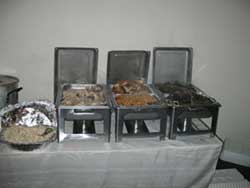
Figure 14-Once the baby Jesus is placed in the manger, everyone heads inside for la cena (dinner). The meal was served buffet style and consisted of chicken, tamales, macaroni salad, beans, and jambalaya.
Three Kings Day
El Día de los Tres Reyes (Three Kings Day) is celebrated on January 6th, and commemorates the day when the three kings arrived in Bethlehem to honor the baby Jesus and present Him with gifts. Unlike the celebration of Christmas in the United States, this is traditionally the day when children in Mexico receive presents. The influence of American Christmas, however, has lessened the importance of this holiday. According to Fatima Sierra, the daughter of Joaquina Canada, children now receive most of their presents on Christmas day.
Home Altars
In addition to public celebrations, a few families are said to put up small altars and religious pictures in their homes. Victoria Carranza, the owner of La Mexicana, sells candles for this purpose. She noted that people use particular types of candles for specific purposes (Fig. 15). For example, certain candles will be put up after a death in the family, or on Christmas, the Day of the Dead, and other holidays.
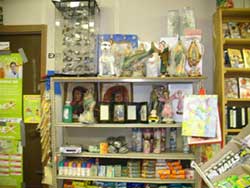 Figure 15-Victoria Carranza, the owner of La Mexicana, sells clothing used for baptisms and quinceañeras. She also sells religious items such as statues, incense, and candles that are used for home altars.
Figure 15-Victoria Carranza, the owner of La Mexicana, sells clothing used for baptisms and quinceañeras. She also sells religious items such as statues, incense, and candles that are used for home altars.